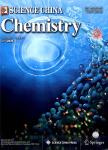Recent progress on the excited-state multiple proton transfer process in organic molecules
Recent progress on the excited-state multiple proton transfer process in organic molecules作者机构:Institute of Functional Nano&Soft Materials(FUNSOM)Jiangsu Key Laboratory for Carbon-Based Functional Materials&DevicesSoochow UniversitySuzhou 215123China Macao Institute of Materials Science and EngineeringMacao University of Science and TechnologyTaipa 999078China
出 版 物:《Science China Chemistry》 (中国科学(化学英文版))
年 卷 期:2022年第65卷第10期
页 面:1843-1853页
核心收录:
学科分类:081704[工学-应用化学] 07[理学] 08[工学] 0817[工学-化学工程与技术] 070303[理学-有机化学] 0703[理学-化学]
基 金:financially supported by the National Natural Science Foundation of China (52173177,21971185,22105139) China Postdoctoral Science Foundation (2020M681707) funded by the Collaborative Innovation Center of Suzhou Nano Science and Technology (CIC-Nano) by the “111” Project of the State Administration of Foreign Experts Affairs of China
主 题:excited-state multiple proton transfer hydrogen bond photoisomerization organic molecules photophysical properties
摘 要:In contrast to the widely reported excited-state single proton-transfer,excited-state multiple proton transfer(ESMPT)containing two or more intra-or inter-molecular proton transfers has greatly expanded the research scope of the excited-state proton *** recent decades,ESMPT-active organic molecules have attracted much attention owing to their unique photophysical properties,such as large magnitude Stokes shifts and dual *** photophysical properties facilitate the application of the organic molecules in organic solid-state lasers,fluorescent probes and sensors,and molecular ***,we introduce the fundamentals of the ESMPT and review the recent advances in different types of ESMPTs in organic ***,we present our conclusions and the future development prospects of the ESMPT in organic molecules.



